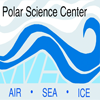
|
Ron Kwok Research Scientist/Engineer - Principal rkwok01@uw.edu Phone 818-359-4881 |
|
Publications |
2000-present and while at APL-UW |
SWOT observations over sea ice: A first look Kacimi, S., S. Jaruwatanadilok, and R. Kwok, "SWOT observations over sea ice: A first look," Geophys. Res. Lett., 52, doi:10.1029/2025GL116079, 2025. |
More Info |
28 May 2025 |
|||||||
|
We present a first examination of observations from the surface water and ocean topography (SWOT) mission over the polar oceans. In SWOT, bright, quasi-specular leads are associated with lower heights relative to the surrounding ice cover. Surface heights and freeboard from SWOT and ICESat-2 are compared in two near-coincident segments in the Beaufort and the Weddell Seas. Correlations and mean differences between these 30-km ICESat-2 and SWOT height segments are 0.91 (–0.02 ±± 0.08 m) in the Beaufort and 0.65 (0.01 ± 0.09 m) in the Weddell. Differences in freeboards using minimum height as a reference sea surface are 0.04 ± 0.08 m and –0.01 ± 0.09 m; minimum heights are localized within the same lead features of the two segments. The SWOT wide-swath radar altimeter can, for the first time, provide two-dimensional mappings of the spatial variability of freeboard and ice thickness — crucial information that will enhance our understanding of the physical mechanisms driving the decline of sea ice covers. |
|||||||||
Fluctuating Atlantic inflows modulate Arctic atlanticification Polyakov, I.V., and 7 others including R. Kwok, "Fluctuating Atlantic inflows modulate Arctic atlanticification," Science, 381, 972-979, doi:10.1126/science.adh5158, 2023. |
More Info |
31 Aug 2023 |
|||||||
|
Enhanced warm, salty subarctic inflows drive high-latitude atlantification, which weakens oceanic stratification, amplifies heat fluxes, and reduces sea ice. In this work, we show that the atmospheric Arctic Dipole (AD) associated with anticyclonic winds over North America and cyclonic winds over Eurasia modulates inflows from the North Atlantic across the Nordic Seas. The alternating AD phases create a "switchgear mechanism." From 2007 to 2021, this switchgear mechanism weakened northward inflows and enhanced sea-ice export across Fram Strait and increased inflows throughout the Barents Sea. By favoring stronger Arctic Ocean circulation, transferring freshwater into the Amerasian Basin, boosting stratification, and lowering oceanic heat fluxes there after 2007, AD+ contributed to slowing sea-ice loss. A transition to an AD– phase may accelerate the Arctic sea-ice decline, which would further change the Arctic climate system. |
|||||||||
Emerging technologies and approaches for in situ, autonomous observing in the Arctic Lee, C.M., M. DeGrandpre, J. Guthrie, V. Hill, R. Kwok, M.J. Morison, C.J. Cox, H. Singh, T.P. Stanton, and J. Wilkinson, "Emerging technologies and approaches for in situ, autonomous observing in the Arctic," Oceanography, 35, 210-221, doi:10.5670/oceanog.2022.127, 2022. |
More Info |
1 Dec 2022 |
|||||||
|
Understanding and predicting Arctic change and its impacts on global climate requires broad, sustained observations of the atmosphere-ice-ocean system, yet technological and logistical challenges severely restrict the temporal and spatial scope of observing efforts. Satellite remote sensing provides unprecedented, pan-Arctic measurements of the surface, but complementary in situ observations are required to complete the picture. Over the past few decades, a diverse range of autonomous platforms have been developed to make broad, sustained observations of the ice-free ocean, often with near-real-time data delivery. Though these technologies are well suited to the difficult environmental conditions and remote logistics that complicate Arctic observing, they face a suite of additional challenges, such as limited access to satellite services that make geolocation and communication possible. This paper reviews new platform and sensor developments, adaptations of mature technologies, and approaches for their use, placed within the framework of Arctic Ocean observing needs. |
|||||||||
In The News
|
Newest satellite data shows remarkable decline in Arctic sea ice over just three years UW News, Hannah Hickey New estimates of snow depth, from a combination of lidar and radar data, improve estimates of sea ice thickness. Arctic sea ice has lost 16% of its wintertime thickness in the three years since the launch of the IceSAT-2 satellite, and one-third of its winter ice volume over the past 18 years. |
10 Mar 2022
|






